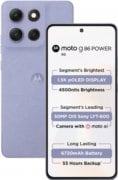Google Chrome's Native Ad Blocker to Roll Out From February 15

After joining the Coalition of Better Ads back in June this year, and promising a native as blocker by early 2018, Google Chrome has announced when the rollout will happen on mobile and desktop platforms. This feature is expected to roll out to all compatible operating systems starting February 15, 2018.
Google, in a blog post, had announced that Chrome had joined the Coalition for Better Ads, an industry group that focuses on improving online ads. Chrome had, simultaneously, also introduced tools like Ad Experience Report to get publishers accustomed to the standards that were to follow.
Another feature, called Funding Choices, was released in beta earlier this year. This feature allows Web publishers to give their site visitors the option to either enable ads or pay for a pass that removes all ads. There has been no update on this front yet.
On Monday, the Coalition for Better Ads announced the Better Ads Experience Program, which aims to certify Web publishers that will agree to not use the 'most disruptive' ads. This program will also accredit browsers and advertising technology companies that will assess publishers' compliance with the Standards and filter digital ads appropriately.
Google also released another update on this announcement. "Starting on February 15, in line with the Coalition's guidelines, Chrome will remove all ads from sites that have a "failing" status in the Ad Experience Report for more than 30 days," said the update on the Google Developer website.
The new Better Ads standards will initially roll out to desktop and mobile platforms in markets in Europe and North America. Under the new standards, desktop ads that might be phased out include pop-up ads, auto-play video ads with sound, prestitial ads with countdown, and large sticky ads.
On the other hand, mobile ads that fall beneath the new standards include pop-up ads, prestitial ads, ads with density greater than 30 percent, flashing animated ads, auto-play video ads with sound, poststitial ads with countdown, full-screen scrollover ads, and large sticky ads.
Google's push towards a native ad blocker will help users cut down the need for installing third-party ad blocker extensions. While the majority of Google's revenue comes from ads, it is unlikely that publishers offering high-quality content will be affected by the decision.
For the latest tech news and reviews, follow Gadgets 360 on X, Facebook, WhatsApp, Threads and Google News. For the latest videos on gadgets and tech, subscribe to our YouTube channel. If you want to know everything about top influencers, follow our in-house Who'sThat360 on Instagram and YouTube.
Related Stories
- Samsung Galaxy Unpacked 2025
- ChatGPT
- Redmi Note 14 Pro+
- iPhone 16
- Apple Vision Pro
- Oneplus 12
- OnePlus Nord CE 3 Lite 5G
- iPhone 13
- Xiaomi 14 Pro
- Oppo Find N3
- Tecno Spark Go (2023)
- Realme V30
- Best Phones Under 25000
- Samsung Galaxy S24 Series
- Cryptocurrency
- iQoo 12
- Samsung Galaxy S24 Ultra
- Giottus
- Samsung Galaxy Z Flip 5
- Apple 'Scary Fast'
- Housefull 5
- GoPro Hero 12 Black Review
- Invincible Season 2
- JioGlass
- HD Ready TV
- Laptop Under 50000
- Smartwatch Under 10000
- Latest Mobile Phones
- Compare Phones
- iQOO Z10 Turbo+
- Vivo T4R 5G
- Ulefone Armor 33 Pro
- Ulefone Armor 33
- Redmi Note 14 SE 5G
- Lava Blaze Dragon 5G
- Infinix Smart 10
- Realme 15 Pro 5G
- Samsung Galaxy Book 4 Edge
- Acer Nitro Lite 16
- Honor Pad X7
- Honor Pad GT 2 Pro
- CMF Watch 3 Pro
- boAt Valour Watch 1 GPS
- TCL C72K QD Mini‑LED TV
- Haier 43 Inch QLED Ultra HD (4K) Smart TV (43H6E)
- Asus ROG Ally
- Nintendo Switch Lite
- Haier 1.6 Ton 5 Star Inverter Split AC (HSU19G-MZAID5BN-INV)
- Haier 1.6 Ton 5 Star Inverter Split AC (HSU19G-MZAIM5BN-INV)

















